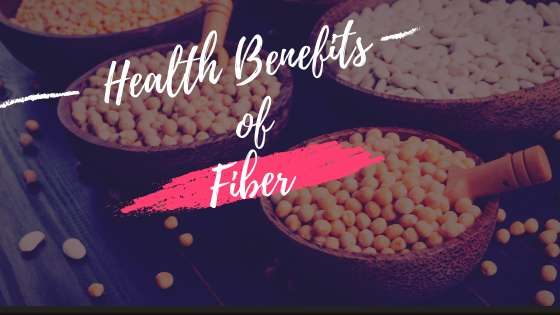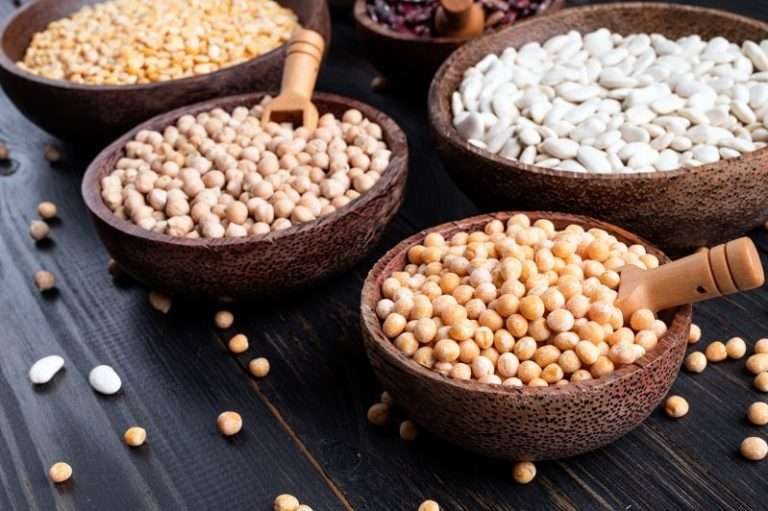Did you know that there are many benefits of dietary fiber and it is quintessential for our health? It helps us feel full longer, reduces cholesterol levels, lowers blood pressure, improves digestion, and even protects against cancer.
There are many types of fiber, including soluble and insoluble. Soluble fiber dissolves in water, while insoluble fiber doesn’t dissolve in water.
Soluble fiber includes oats, beans, peas, lentils, barley, apples, pears, prunes, citrus fruits, berries, and carrots. Insoluble fiber includes wheat bran, whole grains, vegetables, nuts, seeds, and legumes.
Fiber is found naturally in foods such as fruit, veggies, and whole grains.
Table of Contents
What Is Dietary Fiber?
Fiber in this case Dietary Fiber is made up of long chains of carbohydrates called polysaccharides. These molecules are similar to sugars, except that they contain no oxygen atoms. Instead, they have carbon and hydrogen atoms.
Polysaccharides are found in plants. They’re usually broken down during cooking or processing. For example, wheat contains gluten, which is a type of protein. Gluten is composed of two kinds of polysaccharides: gliadin and glutenin.
Fiber is important for good health. It keeps us feeling full, reduces cholesterol levels, and may reduce the risk of heart disease. It also helps regulate bowel movements and keep our digestive system healthy. There are two kinds of fiber: soluble and insoluble. Soluble fiber dissolves in water and forms a gel; it’s found in oats, beans, peas, lentils, applesauce, prunes, pears, bananas, and citrus fruits. Insoluble fiber doesn’t dissolve in water and passes right through the body without being absorbed. It’s found in whole grains like brown rice, wheat bran, nuts, seeds, and legumes.

Types of Dietary Fiber
There are several types of fiber, including insoluble fiber, soluble fiber, resistant starch, and fermentable oligosaccharides, di-saccharides, mono-preneurotransmitters (or FODMAPS). Soluble fiber dissolves in water and helps move food through your digestive system. Resistant starch breaks down into glucose slowly over time, keeping blood sugar levels steady. Fermentable oligosaccharide disaccharides, or FODMAPs, are carbohydrates that pass through your body undigested.
Soluble Fiber
Soluble fiber is found in oats, barley, apples, pears, prunes, citrus fruit, onions, garlic, bananas, avocados, peas, lentils, chickpeas, beans, cabbage, cauliflower, spinach, broccoli, Brussels sprouts, carrots, celery, cucumbers, tomatoes, potatoes, sweet potato, zucchini, eggplant, mushrooms, and berries.
Resistant Starch
Resistant starch is found in brown rice, quinoa, oatmeal, pasta, bread, corn, millet, buckwheat, amaranth, tapioca, potatoes, yams, winter squash, green peas, lima beans, black beans, kidney beans, soybeans, lentils, sunflower seeds, almonds, cashews, hazelnuts, walnuts, pecans, pistachios, sesame seeds, pumpkin seeds, flaxseeds, chia seeds, and wheat germ.
FODMAPs
Fermentable oligosacchrides are found in many fruits and vegetables, including apples, apricots, cherries, plums, nectarines, strawberries, raspberries, blueberries, grapes, kiwis, mangoes, papayas, melons, pineapple, figs, dates, raisins, and olives.
How Much Fiber Do We Need?
The recommended daily intake of fiber is 25 grams per 1,000 calories consumed. That means we need about 3 cups of vegetables and fruits daily.
The recommended amount of dietary fiber varies depending on gender, age, and activity level. Women aged 19–50 require 30 g of fiber per day; men aged 51+ require 38 g of fiber per day. People who exercise regularly need 50 g of fiber per day, while sedentary individuals need 28 g of fiber per day.
Advantages of Fiber in Your Diet
Fiber is a type of carbohydrate that our bodies cannot digest. Instead, it passes right through us without affecting anything. However, it plays an important role in keeping our digestive system functioning properly. Our body needs fiber to keep everything moving along smoothly, and it keeps our blood sugar levels steady. Fiber also helps prevent constipation, hemorrhoids, diverticulosis, and colon cancer. It may also reduce cholesterol levels and protect against heart disease.
There are several reasons why you should add fiber to your diet. First, fiber has been shown to
Healthy Gut Microbiome
Fiber is a type of carbohydrate that our bodies cannot digest. Instead, it passes through us unchanged and ends up in our large intestine. There, the fermentable fiber called prebiotics feeds the beneficial bacteria called probiotics. These bacteria feed on the fermentable fibers and produce Short Chain Fatty Acids (SCFAs).
The SCFAs in turn get used by our bodies to maintain gut homeostasis (balance), improve immunity, and produce vitamins.
Improve Satiety
High satiety is another benefit of fiber. When we eat foods rich in fiber, our bodies release hormones called peptides that tell us we’re full. Eating foods containing fiber also increases feelings of fullness, which can lead to less overeating.
Improves Digestion
Fiber plays a vital role in keeping our digestive systems running smoothly. Fiber works like a broom, sweeping away any unwanted matter that may clog up our intestines. It also keeps food moving along, preventing constipation and allowing nutrients to pass through easily. Fiber is especially good for people with irritable bowel syndrome, diverticulosis, Crohn’s disease, ulcerative colitis, and celiac disease. It can also prevent heart disease, diabetes, obesity, and certain cancers.
Reduces Cholesterol Levels
Fiber reaches the colon where bacteria ferment it into short-chain fatty acids such as acetate, propionate, and butyrate. These short-chain fatty acids are known to lower “bad” LDL cholesterol and increase “good” HDL cholesterol.
May Prevent Diabetes
There are several foods that can help prevent diabetes. Fiber is one of the most effective nutrients for controlling blood sugar levels. Research shows that eating fiber-rich foods can help decrease the amount of glucose absorbed into the bloodstream after meals.
May Promote Weight Loss
There are two types of fiber: soluble and insoluble. Soluble fiber dissolves in water and forms a gel that slows digestion, helping to regulate blood sugar levels. Insoluble fiber does not dissolve in water and passes through the digestive system unchanged. Both types of fiber are beneficial for health, but soluble fiber is especially helpful for promoting weight loss.
Regulate Blood Sugar Levels
Fiber doesn’t break down easily in the digestive system, which slows digestion and keeps food moving along. This causes blood sugar levels to remain steady throughout the day, preventing spikes and dips in insulin. Fiber is also known to reduce inflammation, which may play a role in protecting against cancer.
May Help Prevent Heart Disease
Insulin is a hormone produced by the pancreas that regulates fat storage and metabolism. High insulin levels cause high triglyceride levels, which contribute to cardiovascular problems like stroke and heart attack. By keeping insulin levels stable, fiber reduces the risk of heart conditions.
May Help Relieve Constipation
Consumption of fiber-rich foods can relieve constipation. Fiber is found in fruits, vegetables, whole grains, nuts, seeds, beans, legumes, and dairy products. Consuming adequate amounts of fiber can help prevent constipation.
People who consume less fiber tend to experience infrequent bowel movements. As a result, they often feel bloated and uncomfortable. Eating enough fiber can help alleviate these symptoms. of constipation.
Other Advantages Include
- may protect against certain types of cancers
- may help fight depression
Sources Of Dietary Fiber
Dietary fiber comes from plants, such as wheat, oats, barley, beans, peas, lentils, bran, flaxseed, psyllium seed husks, apples, pears, carrots, celery, cucumbers, onions, garlic, cabbage, spinach, kale, lettuce, tomatoes, potatoes, sweet potatoes, squash, cauliflower, zucchini, watermelon, strawberries, blueberries, cherries, raspberries, blackberries, cranberries, apricots, peaches, plums, prunes, figs, mangoes, nectarines, oranges, tangerines, papayas, pineapple, kiwi, guava, avocado, eggplant, mushrooms, almonds, cashews, hazelnuts, pistachios, walnuts, chestnuts, peanuts, Brazil nuts, pine nuts, pumpkin seeds, sesame seeds, sunflower seeds, soybeans, tofu, tempeh, seaweed, and chia seeds.
In conclusion, fiber is a type of carbohydrate that we often overlook. While carbs like breads and pasta are certainly delicious, they aren’t exactly the healthiest foods around. Fiber, however, has been shown to help keep our digestive systems working properly, which means that we won’t suffer from indigestion or constipation. In fact, fiber can actually help us avoid these problems altogether. Be cognizant of the benefits of dietary fiber and try including foods rich in dietary fibers in your daily diet.
While we often associate fiber with fruits and vegetables, it actually exists in a wide variety of foods, including beans, nuts, seeds, and grains. So next time you’re shopping, look for high-fiber options like brown rice, oats, barley, lentils, quinoa, and beans.
Source: NIH

